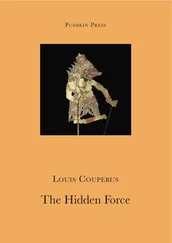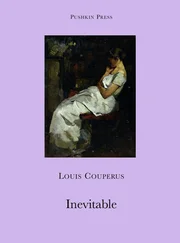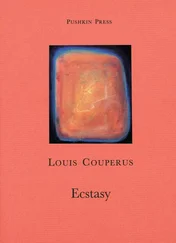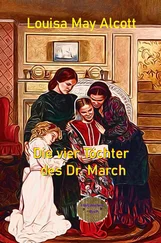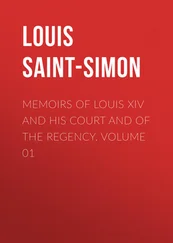Unlike Emma Bovary or Hedda Gabler, however, Eline is not unintelligent or even notably unintellectual, nor — as Ibsen, in his preparatory notes on his play, says of Hedda — conventional. Couperus is insistent that Eline’s English is positively good, and her French is clearly proficient also: she reads as well as speaks both languages. She is interested in the arts, even if she does have an inordinate admiration for Ouida (!), is cognisant of cultures outside the Netherlands, and, if anything, is rather too much at ease among the bohemian, heterodox folk whom her uncle Daniel and his younger wife, Eliza, take up with. Her discussions with Vincent might not impress a professional philosopher any more than they please her irascible sister, Betsy, but they show her to have, for all her languor, a certain liveliness of mind, a wish to explore further than the bounds of the immediately perceptible. It is hard to imagine the other young members of her circle engaging in them. Furthermore she has the ability — often, admittedly, coming to the fore too late or with insufficient force — to stand back from her fantasies and even her behaviour. (Think of her sad, bemused awareness of how badly she can behave to kind old Madame van Raat.) Likewise, she has the ability to discern the sham even when it is she herself who, through her heightened theatrical tendencies, is doing the shamming. When, in her despair, she turns to church-going, she can see through her own religiosity — so akin to the swooning over opera which led her to idolise the sorry, shabby Fabrice — and also through the hypocrisies of her fellow worshippers.
No, Eline’s tragedy — for it is nothing less — is not the consequence of her having too much erotic passion in her or too little sharpened an intellect. It is that she has too abundant and fertile an imagination in a society which gravely undervalues this quality, indeed scarcely even pays lip-service to it. Imagination is not an attribute one could ascribe to any other character in the book — with the possible exception of Eline’s shadow-self, Vincent, and perhaps Frédérique, in her own frustrated way. Her milieu is one of fundamentally practical, pragmatic persons, sensible once they have put youthful idleness behind them, incurious, rarely looking beyond their own set, dabbling in the arts (as Paul van Raat does) while unaware that these have profounder purposes than amusement, worried about money in a household-expenditure kind of way, but never seriously discomposed by current affairs — and accordingly disinclined ever to challenge the status quo.
Eline surely emanates from that part of Couperus’s own experience which made him, in a vital respect, an outsider in the social world in which he was so accepted. The Couperus family had a long connection with the Dutch East Indies. Louis Couperus’s own father, John Ricus Couperus, was born there in 1816. In 1872, when Louis was only nine years old, Couperus senior took his family away from The Hague back to the Indies, where they had property, and they did not return to Holland until 1878, when the boy was fifteen. Couperus was therefore something of a stranger in those circles which were so open to him, and in which he was expected to have a role. And his kinship here with spoilt, orphaned Eline becomes the clearer when we realise what a pampered, luxurious life he knew as a child in Batavia (Java’s capital) as a child of its ruling class. What he also was aware of in the Javanese life all round him was its rich vein of inherited lore, its reliance on instinct rather than rational precepts, its attention to natural phenomena which the folk-mind read as emanations of mysterious powers, often dark, hostile and running contrary to humankind’s conscious intentions or will. Such knowledge he could not have gained remaining in The Hague.
In one of Couperus’s greatest subsequent novels De Stille Kracht ( The Hidden Force , 1900) Couperus depicts Van Oudijck, a Dutchman who holds the eminent position of Resident of a Javanese province: kindly, conscientious, ready to be a paterfamilias with all the responsibilities and demonstrations of affection that entails, even prepared to face up to his own sensuality. But he is lacking in imagination, and vigorously suppresses any signs of that quality which tentatively surface. His failure here — demonstrated in his dealings with the mother of the Javanese Regent, or chief nobleman — has dire consequences for many, but before these have become fully apparent, he and those close to him experience hideous, terrifying manifestations of hostile occult spirits, whom the superstitious local folk can name but whom the educated Dutch refuse even to acknowledge until far too late. These are emanations from the shadow-land, the vast region of the collective unconscious which the colonialists have chosen first to despise and then to deliberately ignore.
Eline Vere is thus of the East Indies without being aware of this. The ‘ghost’ she sees behind her picture of life with Otto, the fantasies she embroiders round the decadent figure of Vincent, the terrifying cavalcade of images that haunt her on her last day of life — these relate intimately to what torments Van Oudijck and his wife in The Hidden Force .
The importance of the East Indies to Louis Couperus is evidenced in his marrying his cousin Elisabeth Baud, whose family had distinguished itself in Indies service, and in the couple’s living there from March 1899 to February 1900, returning again for four months during their long travels of October 1921–October 1922. Of the generous cast in Eline Vere the irrepressible Etienne van Erlevoort is tempted to join the colonial administration but in the end prefers to stay at home. But there is one very important character in the novel connected with Java — the ill and indigent Jeanne Ferelijn, whose husband is on poorly paid furlough and who pines in what she sees as the drabness of Holland for the richness of her Indies, whither she returns and where she dies. Significantly when Eline, in her hysterical passion, flees the Van Raats’ house at night, it is to Jeanne she goes, Jeanne with whom she was warmly friendly when they were both schoolgirls, and who now in her illness will console and sustain her. And when later Eline learns of Jeanne’s death, she is dreadfully upset; indeed we can see her reception of this news as the most authentic moment of her life. This then is Eline’s tragedy: to have been born with too large a supply of imagination in a society too focused on the cash nexus and on living comfortably. Her neighbours and kinsfolk in The Hague represent only too well the dominant culture of their times extending from Gilded Age America to Queen Victoria’s Jubilee in Britain to France on the eve of the Dreyfus affair.
. .
Tolstoy was not the only influence on the keen, probing mind of the young Couperus. And of Tolstoyanism itself, with its emphasis on the word of the Gospels and on the quietist faith of ordinary folk, I can see only mild manifestations. Mesdames van Erlevoort and van Raat are undogmatically pious, the lives of both women being dominated by a warm, compassionate, maternal feeling commendably inclusive of others outside their immediate family, and therefore exemplary. (See the treatment of Eline by both women.) Couperus tenderly evokes simple country church-going for us, indeed his whole portrayal of Gelderland life as more conducive to ethical health and spiritual contentment than the sophisticated urban round of The Hague could loosely be described as Tolstoyan. Similarly his preference for the good-hearted in all circumstances — whether represented by indolent Henk or hard-working Jeanne Ferelijn — relates to Tolstoy’s admiration for certain of his characters, Count Nicholas Rostov and Princess Mary in War and Peace for example. But all these can, and probably should, be seen mainly as expressions of temperamental priorities and preoccupations, as well as of the contemporary fear that the age, in its obsession with productivity and wealth, had brought about rather too radical a severance from the natural life. As discernible as that to Tolstoy is Couperus’s debt — one is tempted to call it ideological — to Émile Zola (1842–1902). By the time of Eline Vere ’s appearance fifteen novels in Zola’s great twenty-volume Rougon-Macquart sequence had appeared, its ambition to show, through two interconnected families, both the laws of human heredity and the development (illustrating these laws) of France up to the fall of the Second Empire. Among these books were such influential and powerful works as L’Assommoir (1877), Germinal (1885) and La Terre (1887) — while a sixteenth came out the same year as Couperus’s first novel, Le Rêve (1888).
Читать дальше

